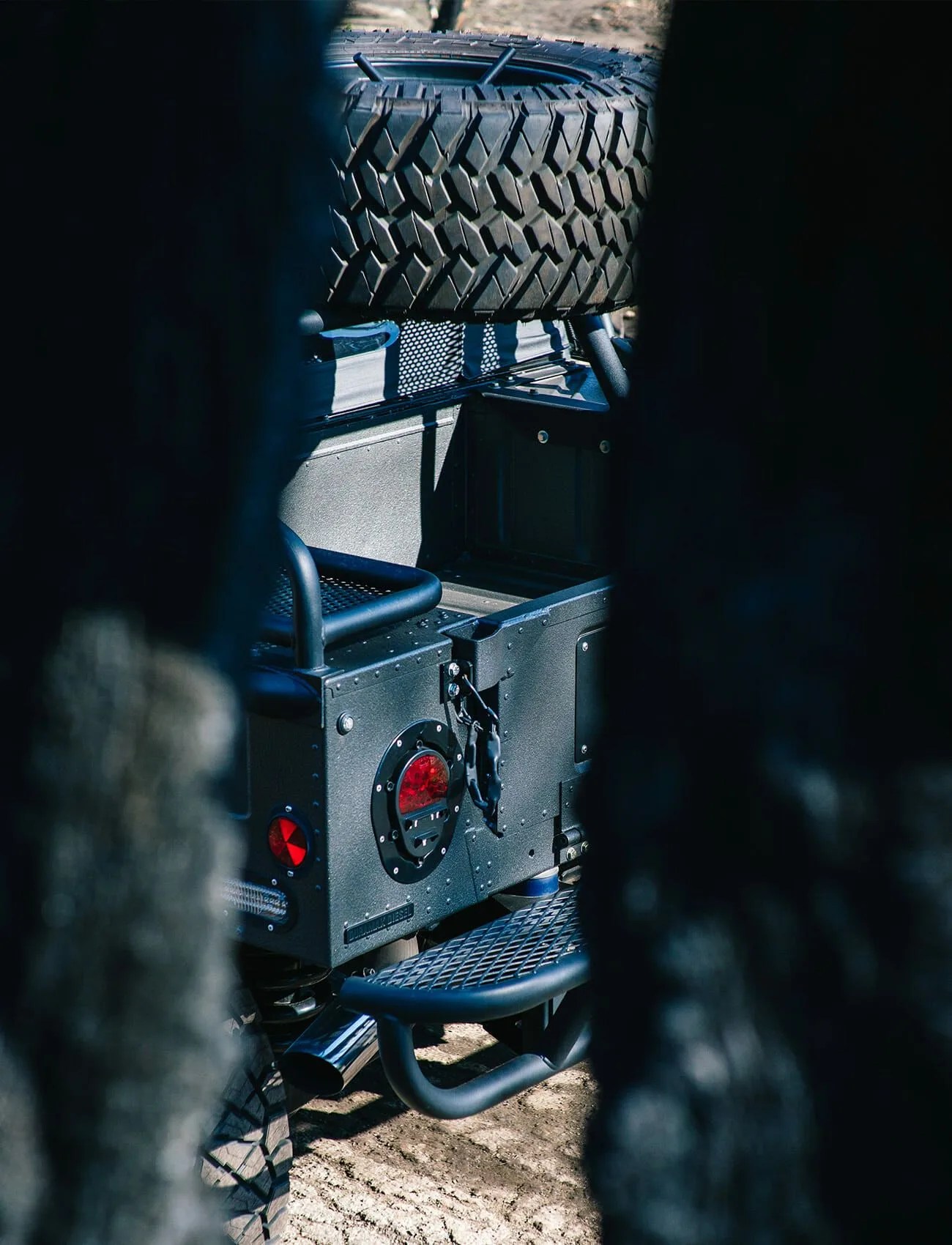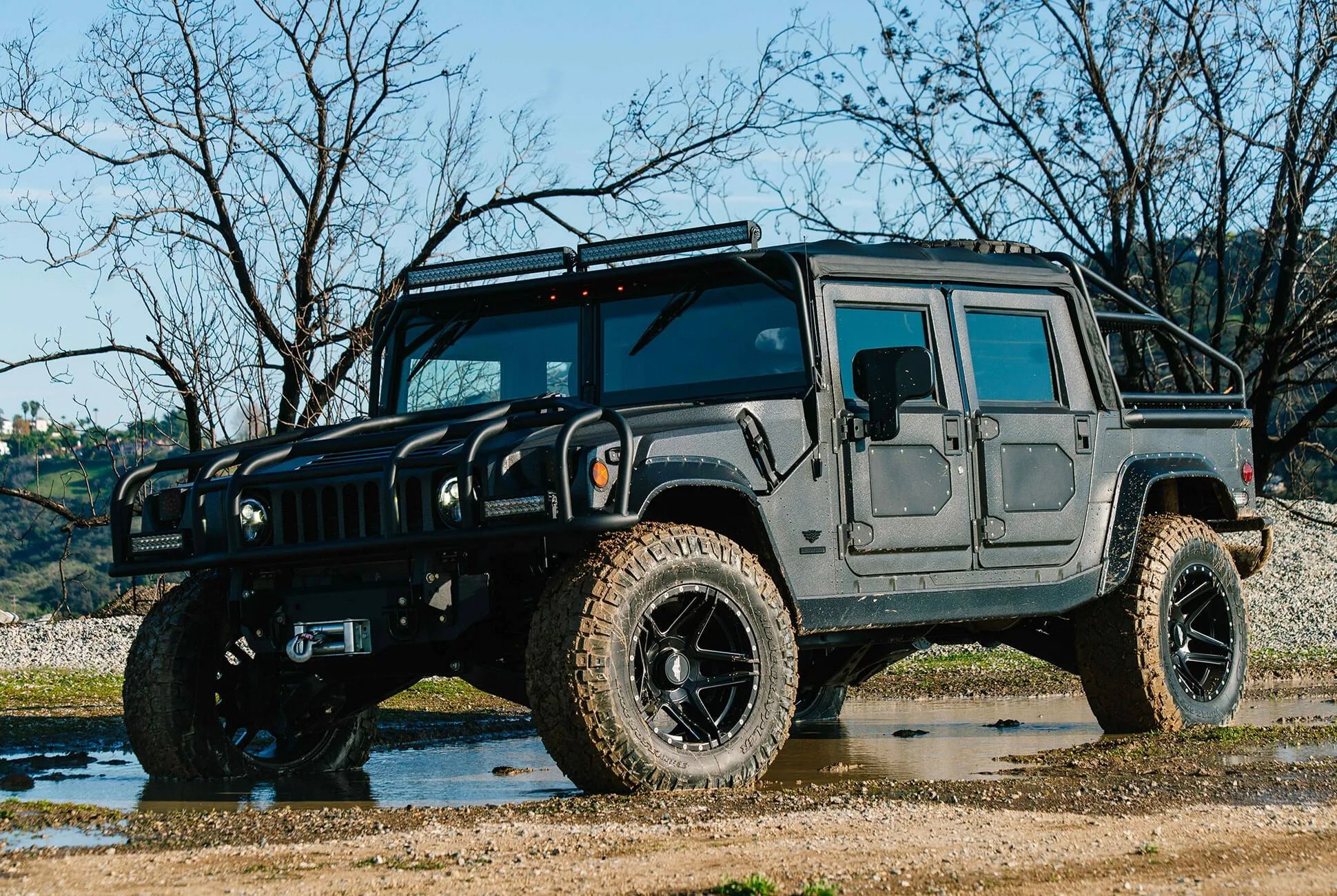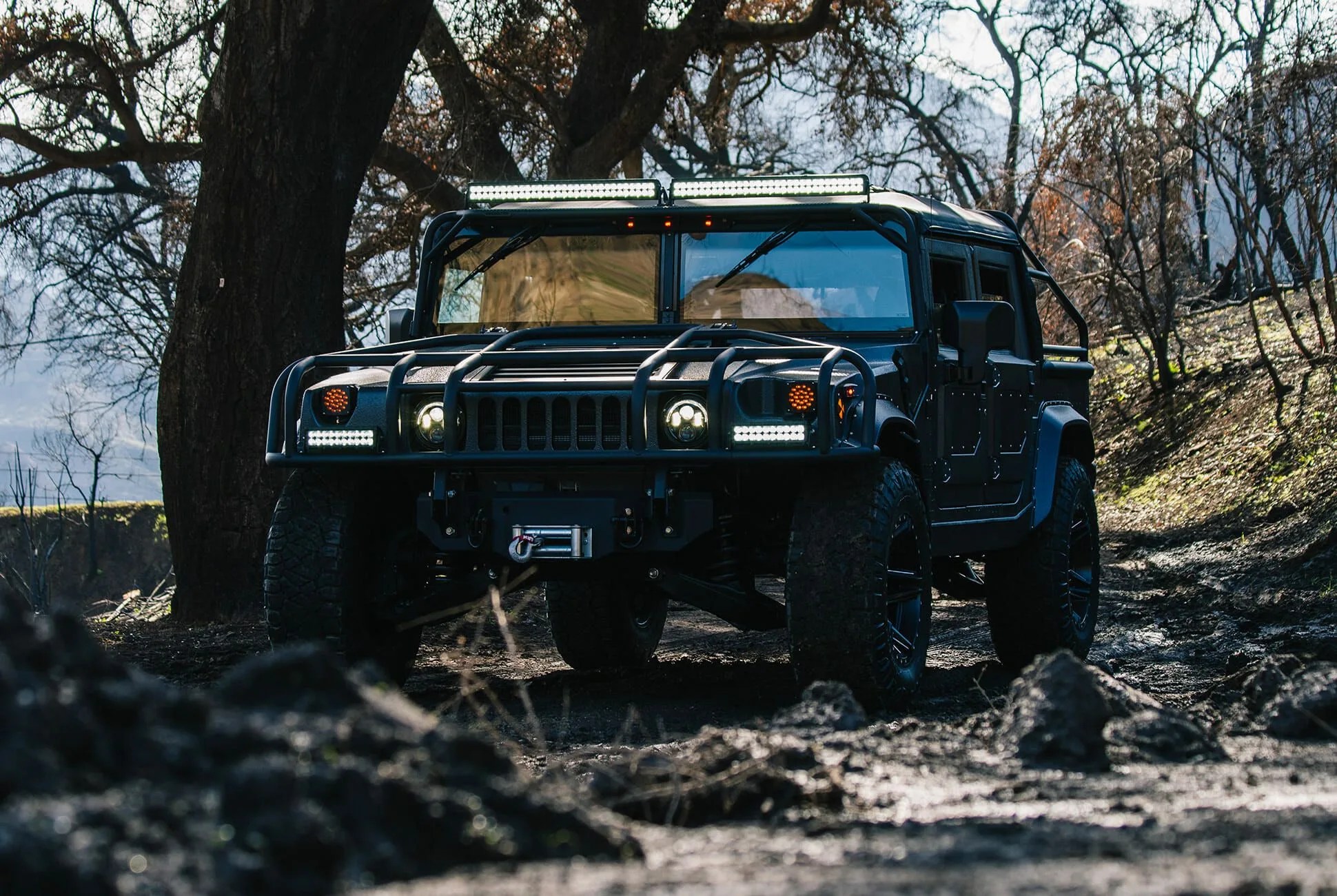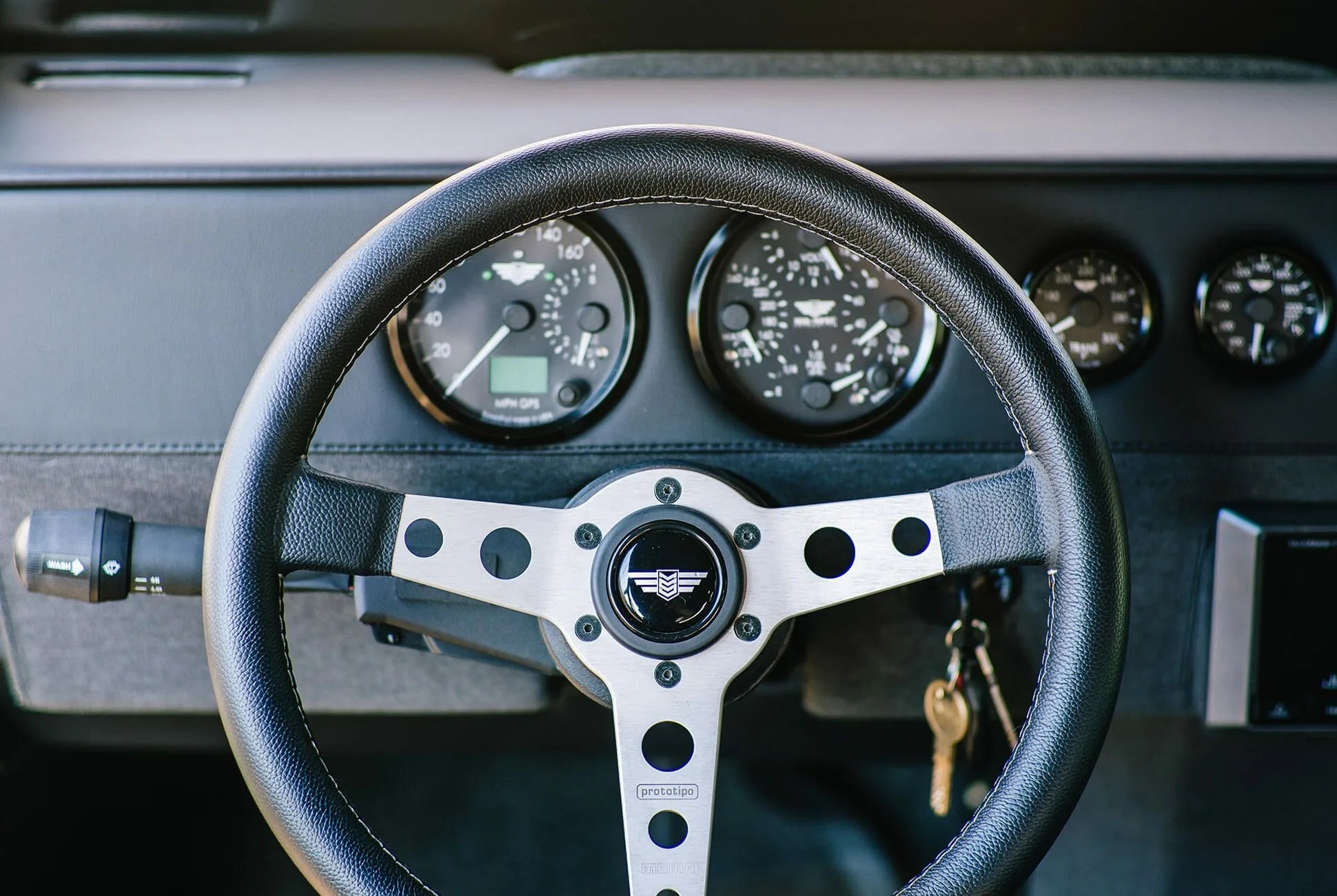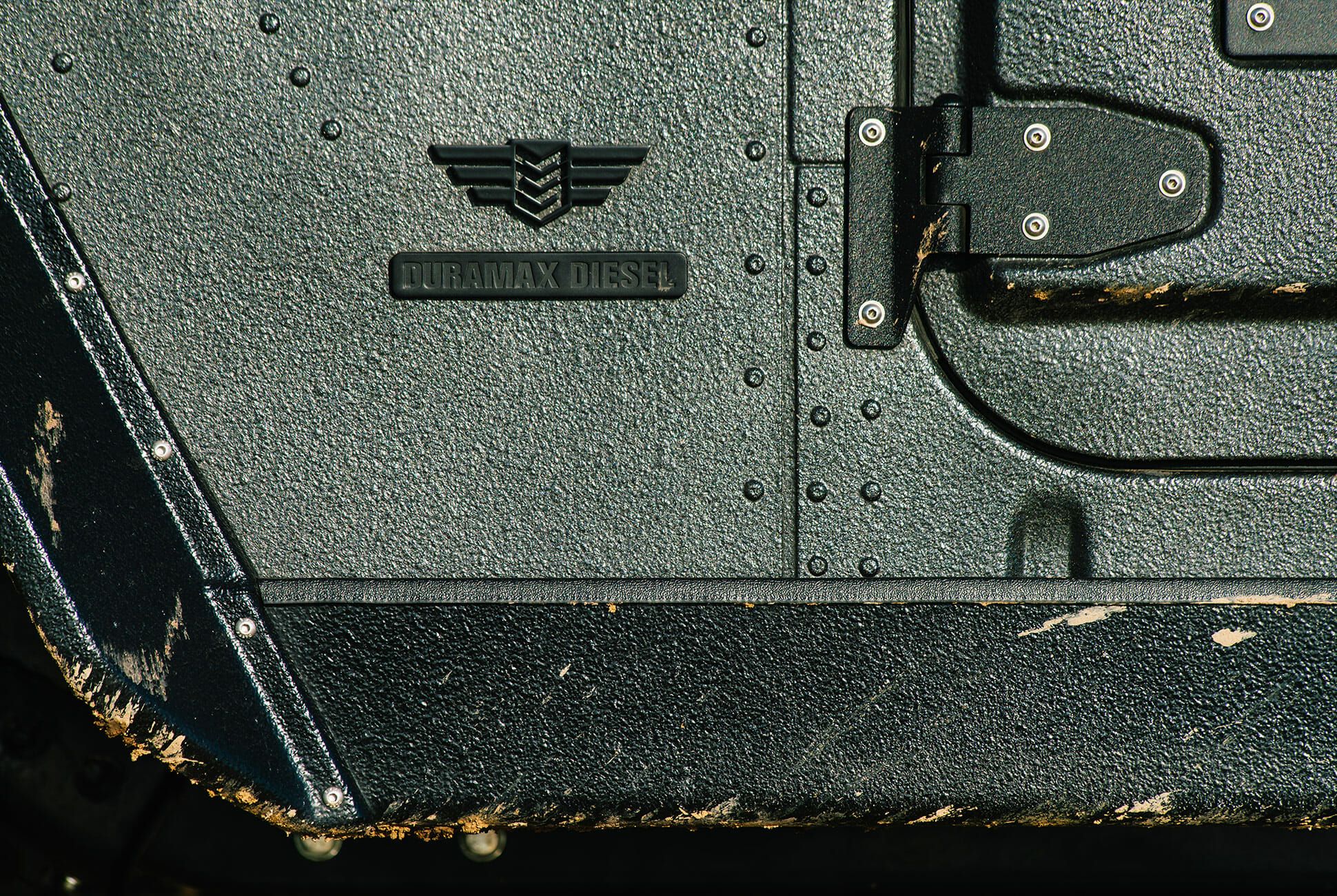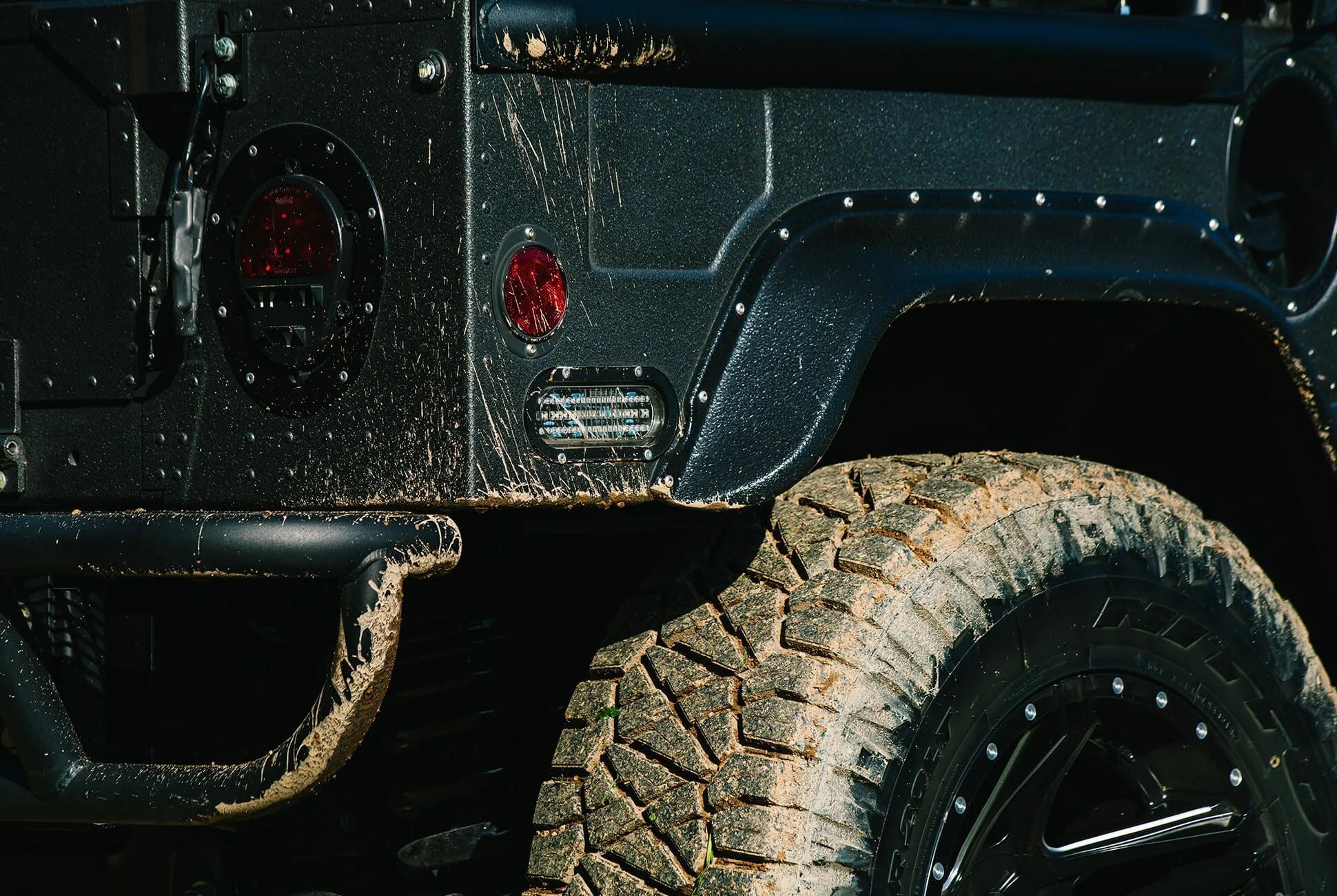12 photos
The latest design trends in the automotive marketplace can be depressing to enthusiasts. Fake exhaust tips, the ever-shrinking number of vehicles available with a manual transmission, four-door “coupes”, excessive amounts of badging — the list goes on and on. Today’s vehicles are objectively better in every measurable way, but the immeasurables and subjectives come up short. For that reason, the resto-mod market is booming. The appeal of a classic silhouette and obsessively perfect build-quality combined with just the right amount of modern technology is undeniable. From Defenders to Power Wagons to Broncos, the 4×4 resto-mod scene is rife with competition now, but only Mil-Spec Automotive has the audacity to take on the John Henry of trucks: the Hummer H1.

To put it plainly, outside the realm of military use the original Hummer H1 sucked. It was slow, inefficient, impractical and uncomfortable. Still, the H1 is one of those vehicles that stirs people, despite it being little more than an eight-foot-wide box on wheels. Fortunately for all of us with “the sickness,” the founders of Mil-Spec Automotive understand the simple beauty and huge potential of the H1. In just over three years the company went from lofty concept to striking reality: reimagining the truck to suit civilian connoisseurs of extreme vehicles. The company has produced a string of quarter-million-dollar final products, all mostly sold. And I drove Chassis #001, The Launch Edition.
It took all of five minutes talking with the CEO and Owner Adam Mitchell for me to fully understand that his work is above all else a labor of love. We walked around Chassis #001 before I drove away for the afternoon, and Adam’s eyes were glowing with pride as he pointed out each detail that makes their interpretation of the H1 special. Nearly every element of the platform has been replaced; only the original donor frame rails and body cores are retained. Of course, the 12-person team that hand-builds each Launch Edition pores over those meticulously as well, stripping them down to bare metal before they are essentially re-manufactured.
